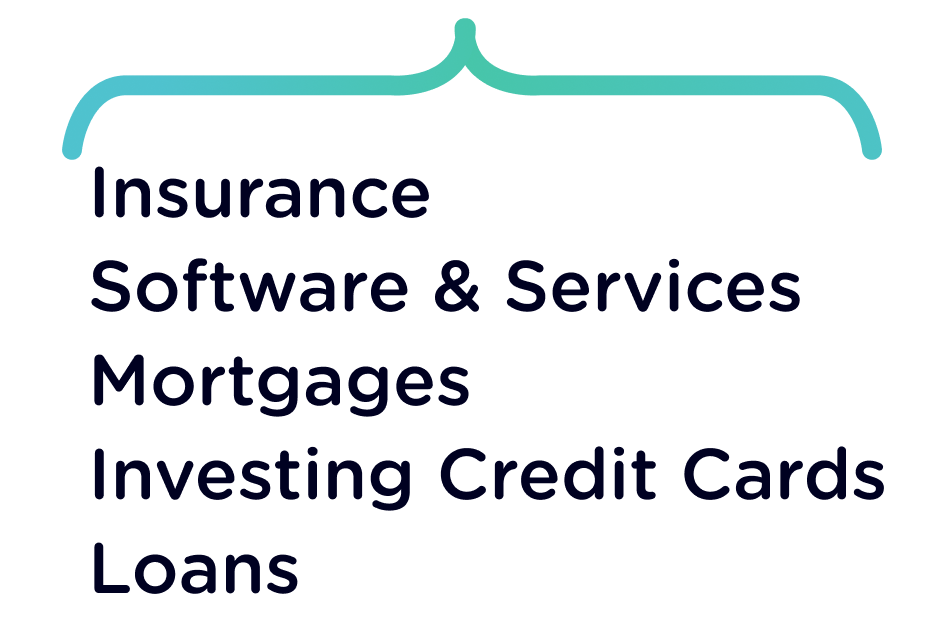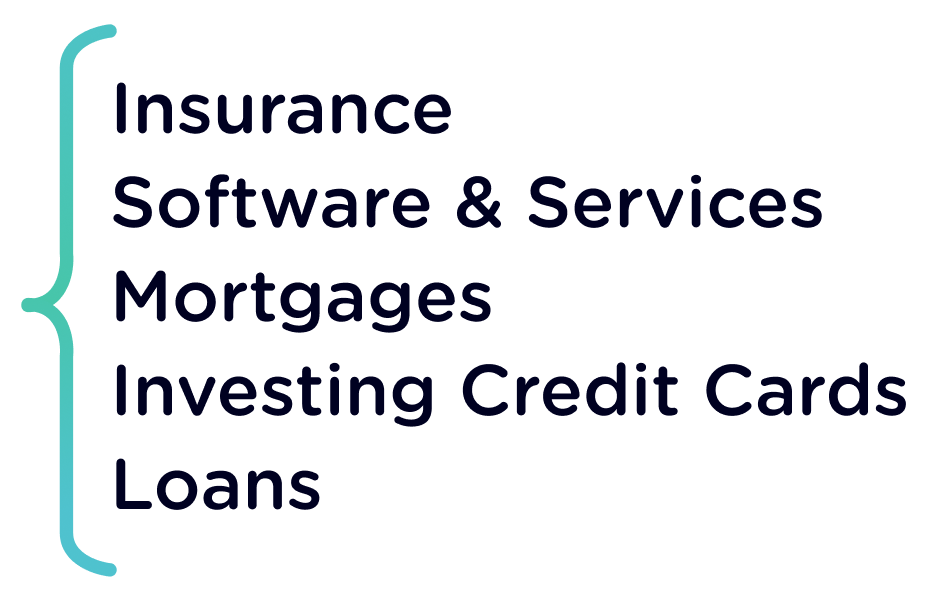Robo advisors can automate parts of your investing process to help cut costs and reduce human error. Real people still help with your portfolio, and the result is a market-tested solution for Canadian investors who want to grow their wealth.
Robo advisors aren't for everyone, though, particularly if you prefer to take an active role in your investment management.
Here are the best robo advisor options in Canada and a comparison of their fees and features.
Best Robo Advisors in Canada 2025
Robo advisors vary by fees, features, and usability – here are the top options to help you find the right fit:
| Category | Winner | Minimum investment | Average fees and MER | 1-Year Return | 3-Year Return | 5-Year Return |
|---|---|---|---|---|---|---|
| Best overall | RBC InvestEase | $100 | Fees: * 0.5% Average MER: * 0.17% | 9.5% | N/A | N/A |
| Best low fee | Questwealth | $1,000 | Fees: * Under $100k: 0.25% * Over $100k: 0.2% Average MER: * 0.195% | 10.96% | 5.23% | 4.44% |
| Best for just starting out | Wealthsimple managed investing | $1 | Fees: * Under $100k: 0.5% * Over $100k: 0.4% * Over $10mil: 0.2% Average MER: * 0.31% | 10.5% | 15.8% | N/A |
| Best for people investing high sums | CI Direct Investing | $100 | Fees: Under $150k: 0.6% Next $350k: 0.4% Over $500k: 0.35% Average MER: .19% | 7.2% | N/A | N/A |
| Best for learning about investing | BMO SmartFolio | $1,000 | Fees: Under $100k: 0.7% Next $150k: 0.6% Next $250k: 0.5% Next $500k: 0.4% Average MER: 0.275% | 6.49% | 3.52% | 4.48% |
| Best for experienced investors | Justwealth | $5,000 | Fees: Under $500k: 0.5% Over $500k: 0.4% Average MER: 0.2% | 9.8% | 4.99% | 6.76% |
| Best for innovation | ModernAdvisor | $1,000 | Fees: 0.4% + $5 per account Average MER: 0.19% | 7.8% | 4.4% | 6.8% |
| Best for environmentalists | Moka | $1 | Fees: $15 per month | 3.88% | N/A | N/A |
Methodology
To evaluate robo advisors, we analyze over 20 data points to generate a trustworthy Genius Rating. We consider all aspects of a robo advisor, including fees, investment options, minimum investment amount, access to support, perks, customer satisfaction, and promotions, to assess its overall value. Then, the robo advisor’s features are rated based on how they stack up against other available options.
Best robo advisor in Canada 2025: RBC InvestEase
The RBC InvestEase platform is one of the most reliable robo advisors in Canada, provided by one of Canada’s biggest banks. Upon funding your account, the RBC InvestEase algorithm (and experts) maintain your investments for you. This makes the entire process simple, especially for new investors.
- Trusted industry name
- Big portion of transfer fee can be waived
- Low minimum to start investing
- Responsible investing portfolios
- NOMI Insights helps with goals
- The fees could be better
- Transferring to another institution incurs a hefty fee
- No mobile app
- Resident of Canada
- Age of majority
- A SIN starting with a number from 1 to 7
- Low minimum balance requirement
- Non-registered
- TFSA
- RRSP
- FHSA
Management fees: 0.5%
Minimum account size: $100
Our pick for the best robo advisor in 2025 is RBC InvestEase . RBC’s robo advisor is one of the most reliable robo advisors in the market, and its low minimum investment paired with its diverse portfolios makes it an all-around excellent choice. The platform is also automated, so once you’ve set up your account and any personalized plans you want, RBC InvestEase
You only need $100, which is lower than many other robo advisors – and if you’re already an RBC customer, it’s even easier to get started with InvestEase.
For socially-minded investors, RBC also offers a responsible investing option.
| Pros | Cons |
|---|---|
|
|
Best low fee: Questwealth
Questwealth portfolios is the robo advisor service offered by Questrade, a large online broker in Canada. It offers you ETF-based portfolios in a variety of account types – ranging from personal, to registered, and even corporate. If you're looking for an investment account that does all the work for you, this is one of the best places to start.
- Some of the lowest fees in Canada
- Covers transfer fees for any balance
- Reinvests dividends
- $1,000 minimum investment
- Fees for wire withdrawals
- Some of the most competitive fees in the business
- TFSA
- RRSP
- Spousal RRSP
- LIRA
- Locked-In RRSP
- RIF
- LIF
- RESP
- Family RESP
- Cash
- Joint Cash
- Corporate Cash
- FHSA
- Margin
Management fees: Between 0.2% and 0.25%
Minimum account size: $1,000
Questwealth Portfolios is the robo advisor offered by trusted online broker Questrade. MER fees range from 0.17% to 0.22% and these are some of the best fees possible with Canadian robo advisors.
We like that Questwealth seems the most eager to support its clients – real people respond to the virtual assistant chat feature. Plus, they offer a range of outreach options depending on your issue.
This is a user-friendly platform trusted by many Canadians – the only drawback is that you need a minimum of $1,000 to get started.
| Pros | Cons |
|---|---|
|
|
Best for new investors: Wealthsimple managed investing
Wealthsimple managed investing is a robo advising investment platform from one of Canada's favourite online brokerages, Wealthsimple. It offers a hands-off investment experience with no paperwork and no account minimums – a huge draw for anyone who's new to the world of investing or simply trying to make smart choices with minimal funds.
- Easy to understand fees
- The set-and-forget-it simplicity
- A good array of account types that can grow with you
- Extraordinary security for your money and accounts
- Grow into Wealthsimple Premium
- Socially responsible and Halal investment options available
- Higher account management fees
- Limited tools
- Talking to a human can be tricky
- Provides socially responsible and Halal investment options
- Can connect your account to Mint for easy budgeting
- Get a dedicated team of advisors if you have more than $500,000 in assets
- RRSP
- TFSA
- Personal
- RESP
- RRIF
- LIRA
- Joint
- Business
- FHSA
Management fees: Between 0.2% and 0.5%
Minimum account size: $1
Wealthsimple managed investing is one of the best robo advisors around, a product from a Canadian fintech company that offers an online broker and free tax software on top of a robo advisor.
It’s a straightforward investing experience. Just deposit any amount of money and you can get started investing. Wealthsimple managed investings platform is easy to learn, making it super accessible for new investors to dive in.
A bonus with Wealthsimple managed investing? If you transfer at least $15,000 in funds from another bank, they'll pay any incurred transfer fees as well (with a few exceptions), making it easier to switch funds over and save on fees.
| Pros | Cons |
|---|---|
|
|
Best for people investing high sums: CI Direct Investing
CI Direct Investing is one of a number of robo advisors available to Canadians, being in direct competition with other companies like Wealthsimple and Questrade. It offers a good range of products and services suited to varying levels of investing and all risk tolerance profiles.
- Good range of account types
- Tax-loss harvesting and automatic rebalancing
- Socially responsible investing options
- Real support from qualified humans
- Access to Private Investment Portfolios
- Higher than average fees for an online brokerage
- Transfer fees are only forgiven for large transfers, and have a cap
- Access to Private Investment Portfolios with broad diversification
- RRSP
- TFSA
- Individual
- RESP
- Joint
- Corporate
- LIRA
- RRIF
- LIF
- RDSP
- HISA
- Entity
- Spousal RRSP
Management fees: Between 0.35% and 0.6%
Minimum account size: $100
You only need $100 to get started with CI Direct Investing, but their options may prove more valuable to people who are investing larger sums of money. That’s because you can also access private real estate, private mortgages, and private equity in addition to robo advisor investing.
Fees are higher than average with CI Direct Investing. However, you can expect a well-designed dashboard and plentiful options for diversifying your investments.
| Pros | Cons |
|---|---|
|
|
Best for learning about investing: BMO SmartFolio
BMO SmartFolio is an online investment portfolio management service offered by Bank of Montreal. What sets them apart from other services like theirs is that they use dedicated expert advisors to manage your account (instead of pure algorithms like most robo advisors), while maintaining low management fees for their services.
- Financial experts, not robots
- ETF investing approach, lower fees
- Fees beyond MERs
- ETF portfolios easily emulated by DIY investors
- Actively managed by a team of dedicated advisors
- Backed by a big Canadian bank
- TFSA
- RRSP
- RESP
- RRIF
- Joint investment accounts
- Non-registered accounts
Management fees: Between 0.4% and 0.7%
Minimum account size: $1,000
BMO is the second big bank on our list with its BMO SmartFolio, offering years of experience helping ETF investors manage their money. Returns are respectable. Existing BMO clients will appreciate the ease of investing within the ecosystem with a single account to manage.
Be aware that BMO’s 0.7% fee for balances below $100k is pretty high compared to other options. You can only invest in BMO ETFs with BMO SmartFolio.
| Pros | Cons |
|---|---|
|
|
Best for experienced investors: Justwealth
Justwealth is a top notch robo-advisor, offering low fees and a variety of different portfolios.
- Minimum monthly fee
- High $5,000 minimum investment
- Canadian resident
- Age of majority
- Personal portfolio management
- Canadian owned
- Covers transfer fees
- RRSP
- Spousal RRSP
- RRIF
- TFSA
- RESP
- LIRA
- LIF
- Non-registered plan
- FHSA
- RDSP
- Individual
- Joint
Management fees: Between 0.4% and 0.5%
Minimum account size: $5,000
The sheer number of investment options available at Justwealth may overwhelm less experienced investors. However, it may be the best option for Canadians who want something specific. You’ll also enjoy personalized attention from your portfolio manager, which is a nice complement to the typical faceless robo advisor experience.
A minimum investment of $5,000 may exclude some investors. However, we like the variety of options at Justwealth and the returns it earns for its clients.
| Pros | Cons |
|---|---|
|
|
Best for innovation: ModernAdvisor
ModernAdvisor is a low-cost portfolio management service meant to compete with services offered at banks. The idea behind ModernAdvisor is to have an investment team of people and robo advisors working with you as you invest, and assessing your tolerance for risk before investing your money.
- Tailor-made portfolios
- Socially responsible investment options
- Pay attention to all fees – even what’s charged by Credential
- Transfer fees not covered at all
- Flexible investment options
- Competitive fees
- Passive and actively managed portfolios both available
- RRSP
- TFSA
- RESP
- Family RESP
- Joint
- Individual
- RRIF
- LIRA
- Spousal RRSP
Management fees: Between 0.35% and 0.5%
Minimum account size: $1,000
With uncommon options like emerging-market bonds, ModernAdvisor is exploring new ways to invest. Curious investors may appreciate the experimental approach, and the returns have been on par with other robo advisors on this list.
Innovation does come with risks, however. ModernAdvisor is a newer player and you’ll need to pay close attention in order to craft a strategy that works for you. If you can afford the $1,000 minimum investment, the "mean-variance optimization" technique could surprise you.
| Pros | Cons |
|---|---|
|
|
Best for environmentalists: Moka
Make investing easy by setting up recurring deposits and rounding card purchases to the nearest dollar and ensuring that you're always growing what you have. Plus, earn perks on Moka's partner purchases and other incentives to earn double cash back.
- Set up recurring deposits to boost your account
- Easily follow expert-approved investment strategies
- Automatically do your part for the environment
- Be aware of MER fees
- Transfer fees up to $50 on RRSP withdrawals
- Age of majority
- Passively invest in your future and the environment
- Easily follow expert-approved investment strategies
- Non-registered
- TFSA
- RRSP
Management fees: $20 per month
Minimum account size: $1
Breaking the mould for investment portfolios, Moka has a trendy and accessible approach. With a flat $20 fee, you know exactly what you’ll pay each month – although this may mean that your fees might end up higher than with other models.
You can get started with just $1 and the platform is safe and easy to use. However, some users report issues with a roundup feature as well as difficulty reaching customer service.
| Pros | Cons |
|---|---|
|
|
Fee comparison of the best robo advisors in Canada
Robo advisor fees are made up of two fees:
- Standard fees (usually based on your account balance)
- MER (management expense ratio) fees
Check out these examples of the fees you might pay on a yearly basis in different scenarios. The last column is based on the average MER of 2.53% in Canada.
| Investment size | Questwealth | Wealthsimple managed investing | RBC InvestEase | CI Direct Investing | BMO SmartFolio | Justwealth | ModernAdvisor | Moka | Average MER |
|---|---|---|---|---|---|---|---|---|---|
| $10,000 | $45 | $81 | $67 | $varies | $92 | $52 | $70 | $264 | $253 |
| $100,000 | $445 | $810 | $670 | $varies | $920 | $520 | $700 | $480 | $2,530 |
| $150,000 | $668 | $1,215 | $1,005 | $varies | $1,380 | $780 | $1,050 | $600 | $3,795 |
In nearly all scenarios, Questwealth took the crown as cheapest option.
What is MER?
MER means management expense ratio fee.
This fee helps to cover the operating expenses and taxes for the company managing your funds, including the automated technology systems for robo advisors.
ETFs also have their own MERs. If you have ETFs in your portfolio, the company’s MER fee will help pay for those underlying fees.
What is a robo advisor?
A robo advisor is an online platform that can help you automatically manage your investments using algorithms – no human advisor necessary.
- Personalized technology: Robo advisors build and monitor a portfolio based on your goals and risk level.
- Lower cost: Robo advisors are cheaper and faster than other investment funds since fewer (or no) humans are involved in actively managing them.
- Automatic adjusting: Robo advisors can instantly rebalance your portfolio to keep it in line with your target asset allocation.
To get started, you’ll deposit funds and then choose an investment portfolio that suits your needs.
Who should use a robo advisor?
Robo advisors can be used by any investor, but they’re ideal for people seeking low-cost, automated portfolio management:
- New investors
- People who prefer a hands-off approach
- People seeking low-cost investment options
If you're a Canadian who wants to grow your wealth but doesn't have in-depth market knowledge and doesn't require regular monitoring, then robo advisors can help.
How to pick a robo advisor
Consider some key factors when comparing robo advisors for your investments:
- Fees
- Minimum investment
- Risk tolerance and portfolio options
- Investment goals and investment horizon
- Preferred account type (i.e. unregistered, RRSP, etc)
- Company stability
- User interface
- Customer service options
- Promos
As an example, most robo advisors offer a variety of portfolios from conservative to growth-oriented. Not all offer socially responsible portfolios, however.
Fees
Most robo advisors charge a fee on top of the MER fees for any ETFs in your portfolio. The range varies from 0.12% to 0.7%, with most charging between 0.3% and 0.5%.
Some have a tiered fee structure where you’ll pay a different fee depending on your balance. Others, like Moka, charge a flat fee every month, regardless of your overall balance.
Account options
Most (but not all) robo advisors offer registered and unregistered accounts, like RRSPs and TFSAs.
Only a few offer LIRAs, Locked-In Retirement Accounts, and corporate investment accounts.
Performance
Some robo advisors have historically earned a higher rate of return. We reviewed 1-year, 3-year, and 5-year returns in the table above.
It's challenging to predict future performance, even with past data. Learn about the company’s transparency in reporting, risk management strategies, and investment philosophy.
Usability
Although you’ll mostly be hands-off in the future, you still have to go through the setup of your robo advisor account – and you may need assistance in the future.
Some platforms are much easier and simpler to use than others. If you already have experience with your existing bank’s platform, you may find it easier to use their investment platform, too.
The pros and cons of using a robo advisor
Automatic management is the most obvious pro of robo advisors, but consider the full scope of advantages and drawbacks.
Pros
- Automated investing: Algorithms will rebalance your portfolio with zero effort on your part, to enhance your returns, reduce taxes, and keep you aligned with your goals.
- Low fees: Lose less of your money by working with robo advisors than human advisors, who charge higher fees.
- Tailored plans: You can choose from various risk portfolios, socially responsible portfolios, diverse assets, and specific account types to get a custom investment strategy for you.
- User friendly: Feel in control with simple, data-filled dashboards where you can instantly check on your investments.
Cons
- Minimal human interaction: For some investors, robo advisors are too impersonal and don’t provide enough high-touch customer service for wealth management.
- Limited personalization: If you have a complex financial situation, robo advisors may not be able to craft a customized investment strategy as well as a human advisor would.
- Variable performance: The outcome of investing is unpredictable, as with all investments subject to market volatility. Loss can occur and algorithms can change. This unpredictability may concern some investors.
Robo advisors vs. DIY Investing
Robo advisors:
- Are more convenient. You can set it and forget it, especially if you’re comfortable with technology.
- Give you less control. This can be a good thing if you’re prone to emotional investing. It also means that your money is less subject to human error.
- Typically pairs you with a help desk. You can reach out to a real human for advice if you need assistance.
- Charge higher fees. You’ll pay for professional help managing your money, whereas DIY investing can be free or cheaper.
DIY investing:
- Offers freedom and flexibility. You’re in charge of making your own decisions on your own schedule – no predetermined portfolios, biased risk assessments, or automatic adjustments.
- Has a lower barrier to entry. Many DIY investing options are extremely affordable, whereas robo advisors may require a higher minimum investment balance.
- Can be lonely: You have no one to ask for advice and you’re on your own for research. You may find yourself making impulsive or ill-informed decisions without expert input.
Compared to robo advisors, DIY investing is best for those who already have some knowledge and experience with the investment process. There are certainly risks involved with DIY-ing and using online brokers, but they're simply different risks than you'd take with robo advisors.
Robo advisors vs. investment advisors
A robo advisor may be convenient, but investing with an advisor is a more personal approach that can be more holistic. Investment advisors may charge higher fees and require more work.
Robo advisors:
- Cost less. You’ll pay less for an algorithm than a real human advisor.
- Can be more convenient. You don’t have to make an appointment if you have online access via a robo advisor.
- Require comfort with technology. Robo advisor dashboards are comprehensive but can be overwhelming for people uncomfortable or unfamiliar with technology.
- Lack a personal touch. You’re out of luck if you prefer face-to-face discussions about your investment strategy.
Investment advisors:
- Cost more. Fees are much higher for human financial advisors than for robo advisors.
- Can be less convenient. Humans are not available 24/7, whereas robo advisors and chatbots work around the clock. Plus, you have to research and interview people to find a good fit.
- Are more vulnerable. Human error and conflicts of interest are a greater concern with investment advisors than robo advisors.
- Are more personalized. Get a custom, comprehensive financial plan to suit your needs, including extra education, communication, and coaching when needed.
Note that there are investment advisors that offer a combination approach, providing you access to a robo advisor alongside the help of a personal human advisor.
It's time to start investing, but where do you start?Here's everything you need to know about investing in Canada.
Are robo advisors safe?
Yes, robo advisors are considered safe for Canadian investors.
Robo advisors must adhere to strict guidelines since they’re regulated by the Canadian Securities Administrators. Most of them utilize secure technology for data protection and offer investor insurance in case of insolvency.
While the platforms are safe, all investments always carry risks – including market volatility.
Robo advisors cannot guarantee outcomes. Robo advisors may not adjust as smoothly or helpfully as human advisors in response to any changes in your financial circumstances due to a lack of insight into your overall situation.
Editorial Disclaimer: The content here reflects the author's opinion alone, and is not endorsed or sponsored by a bank, credit card issuer, rewards program or other entity. For complete and updated product information please visit the product issuer's website.
FAQ
What is a robo advisor?
Robo advisors are investment portfolios that use a trusted algorithm, which cuts a lot of the costs. You'll usually be matched to an ETF portfolio based on your risk tolerance and may get access to some expert help.
What should I consider when choosing a robo advisor?
One of the main things you should look for in a robo advisor is fees. How are their fees structured and what's their average MER? Also take into consideration customer service and how many portfolio options they have.
Are robo advisors safe?
Yes, robo advisors use a trusted algorithm to help invest your money, which can take away a lot of the human error involved in investing. That being said, most investments come with some level of risk, so proceed with caution.
Can you compare Wealthsimple vs. Questrade?
Wealthsimple managed investing and Questrade are both full-featured investment platforms that offer a robo advisor as well as a DIY online broker platform. When it comes to their robo advisors, Questwealth is cheaper, but Wealthsimple managed investing is more beginner friendly.
How do robo advisors work?
Robo advisors are ETF portfolios that are automated by a trusted investment algorithm. All you have to do is set up your account and transfer in money and your funds will be invested based on your selected risk tolerance.
Are robo advisors better than human advisors?
If you’re uncomfortable using technology or know very little about the world of investing, a human advisor may be a better choice. But if you're comfortable using an online platform, robo advisors can provide a seamless experience.
What is a good robo advisor fee?
On average, these fees range from 0.3% to 0.5%. Be sure to check the fees for your intended investment balance and consider how it might change as your money grows. Remember, ETFs may have their own MERs too.
Do robo advisors really work?
Yes, they certainly do. The algorithms robo advisors use to create and manage your custom portfolio offer instant rebalancing and are less prone to human error and bias. They've also proven to earn competitive returns compared to human financial advisors.
Learn more about investment products
Diving deeper into your Canadian investments? Here are the top products available for you:



































